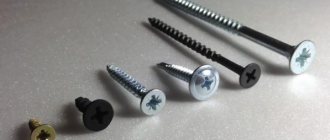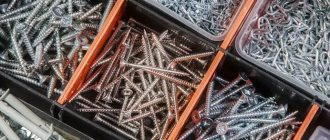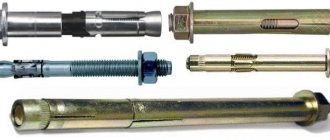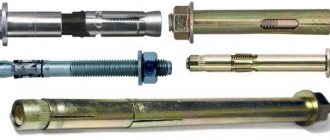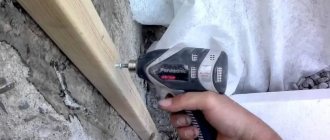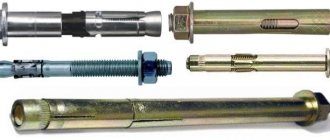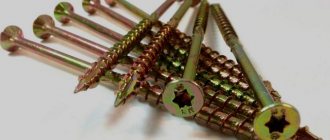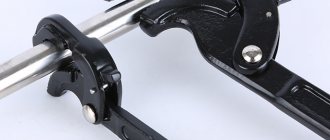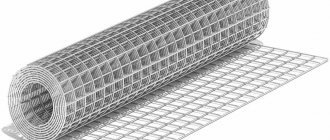In modern wooden house construction, it is simply impossible to do without additional fasteners for various elements of the house’s structure. For each wooden part - be it a beam, a log used to construct the main frame of the house, or floor beams of different thicknesses, rafters, etc. - there are different types of fasteners . Depending on the application, timber fasteners can provide a more reliable connection of wooden parts, as well as minimize deformations during the natural shrinkage of the house.
Read on to learn about the types of fasteners for wooden beams and options for their use.
- Perforated timber fasteners
- Simple corners for attaching beams
- Reinforced perforated corners
- Beam holders
- Open and closed beam supports
- Sliding support for rafters in a wooden house
- Perforated plates
- Height adjustable lift for timber
- conclusions
Perforated timber fasteners
Such fasteners are most often used in the construction of wooden objects .
They are needed in order to strengthen connections in the most vulnerable places of the structure and, therefore, extend the life of the house. In particular, such timber fasteners are suitable for fixing consoles.
Perforated fasteners are presented in the construction market in many variations. For each type of work there is a different type of fastener.
As a rule, they are made of high-strength galvanized steel, which is resistant to corrosion processes.
On average, the thickness of the parts ranges from 2-2.5 millimeters.
Certain types of perforated fasteners for timber can be thicker - from 3 to 6 millimeters, depending on the intended purpose and the expected load on them.
Metal fastening angles for wooden structures
Products found: 105
Available from pick-up warehouse
Often searched for: Reinforced, Galvanized; Product type: Mounting corner; Brand: No name; Application: For wooden structures; Shelf length: 50; Width: 36; Thickness: 2; Length: 0.05; Material: Steel; Tilt angle: 90;
Available from pick-up warehouse
Often searched for: Reinforced, Galvanized; Product type: Mounting corner; Brand: No name; Application: For wooden structures; Shelf length: 90; Width: 65; Thickness: 2; Length: 0.09; Material: Steel; Tilt angle: 90;
Available from pick-up warehouse
Often searched for: Reinforced, Galvanized; Product type: Mounting corner; Brand: No name; Application: For wooden structures; Shelf length: 105; Width: 90; Thickness: 2; Length: 0.105; Material: Steel; Tilt angle: 90;
Available from pick-up warehouse
We will deliver to construction centers
03/08 after 10:00
when ordering before 02/08 until 23:06
Often searched for: Galvanized; Product type: Mounting corner; Brand: GAH ALBERTS; Application: For wooden structures; Shelf length: 50; Width: 35; Thickness: 2.5 mm; Length: 0.05; Material: Steel; Tilt angle: 90;
Available from pick-up warehouse
Often searched for: Galvanized; Product type: Mounting corner; Brand: No name; Application: For wooden structures; Thickness: 1.8; Length: 0.05; Tilt angle: 90; Design: Equilateral; Country of origin: Russia; Dimensions: 50x50;
Available from pick-up warehouse
Often searched for: Galvanized; Product type: Connecting corner; Brand: No name; Application: For wooden structures; Thickness: 1.8; Length: 0.04; Tilt angle: 90; Design: Equilateral; Country of origin: Russia; Dimensions: 40x40;
Available from pick-up warehouse
Often searched for: Reinforced, Galvanized; Product type: Mounting corner; Brand: GAH ALBERTS; Application: For wooden structures; Shelf length: 105; Width: 90; Thickness: 3mm; Length: 0.105; Material: Steel; Tilt angle: 90;
Available from pick-up warehouse
Often searched for: Reinforced, Galvanized; Product type: Mounting corner; Brand: No name; Application: For wooden structures; Shelf length: 70; Width: 55; Thickness: 2; Length: 0.07; Material: Steel; Tilt angle: 90;
Available from pick-up warehouse
Often searched for: Galvanized; Product type: Sliding corner; Brand: No name; Application: For wooden structures; Shelf length: 40; Width: 120; Thickness: 2; Length: 0.04; Material: Steel; Tilt angle: 90;
Available from pick-up warehouse
Often searched for: Galvanized; Product type: Connecting corner; Brand: No name; Application: For wooden structures; Shelf length: 50; Width: 50; Thickness: 2; Length: 0.05; Material: Steel; Tilt angle: 90;
Available from pick-up warehouse
Often searched for: Galvanized; Product type: Mounting corner; Brand: No name; Application: For wooden structures; Shelf length: 50; Width: 35; Thickness: 2; Length: 0.05; Material: Steel; Tilt angle: 90;
Available from pick-up warehouse
Often searched for: Galvanized, Reinforced; Product type: Mounting corner; Brand: No name; Application: For wooden structures; Shelf length: 50; Width: 35; Thickness: 2.5 mm; Length: 0.05; Material: Steel; Tilt angle: 90;
Available from pick-up warehouse
Often searched for: Galvanized; Product type: Narrow corner; Brand: No name; Application: For wooden structures; Shelf length: 25; Width: 14; Thickness: 1.5; Length: 0.025; Material: Steel; Tilt angle: 90;
Available from pick-up warehouse
Often searched for: Galvanized; Product type: Connecting corner; Brand: No name; Application: For wooden structures; Shelf length: 100; Width: 100; Thickness: 2; Length: 0.1; Material: Steel; Tilt angle: 90;
Available from pick-up warehouse
Often searched for: Galvanized; Product type: Mounting corner; Brand: No name; Application: For wooden structures; Shelf length: 90; Width: 65; Thickness: 2; Length: 0.09; Material: Steel; Tilt angle: 90;
Available from pick-up warehouse
Often searched for: Galvanized, Reinforced; Product type: Mounting corner; Brand: No name; Application: For wooden structures; Shelf length: 90; Width: 40; Thickness: 2; Length: 0.09; Material: Steel; Tilt angle: 90;
Available from pick-up warehouse
We will deliver to construction centers
03/08 after 10:00
when ordering before 02/08 until 23:06
Often searched for: Reinforced, Galvanized; Product type: Mounting corner; Brand: GAH ALBERTS; Application: For wooden structures; Shelf length: 90; Width: 65; Thickness: 2.5 mm; Length: 0.09; Material: Steel; Tilt angle: 90;
Available from pick-up warehouse
Often searched for: Reinforced, Galvanized; Product type: Mounting corner; Brand: No name; Application: For wooden structures; Thickness: 1.8; Length: 0.105; Tilt angle: 90; Design: Equilateral; Country of origin: Russia; Dimensions: 105x105;
Available from pick-up warehouse
Often searched for: Galvanized; Product type: Connecting corner; Brand: No name; Application: For wooden structures; Shelf length: 40; Width: 40; Thickness: 2; Length: 0.04; Material: Steel; Tilt angle: 90;
Available from pick-up warehouse
Often searched for: Galvanized, Reinforced; Product type: Mounting corner; Brand: No name; Application: For wooden structures; Thickness: 1.8; Length: 0.09; Tilt angle: 90; Design: Equilateral; Country of origin: Russia; Dimensions: 90x90;
Simple corners for attaching beams
This fastener element is a curved galvanized steel plate with holes of different diameters (from 14 to 55 mm).
Due to the presence of holes, they are very convenient to use for strengthening corner joints of beams, using bolts and screws of different sections.
Separately, it is worth noting the material from which the corners are made . Galvanized steel has the characteristics of strength and at the same time elasticity. In addition, thanks to hot-dip galvanizing technology, such parts do not rust or oxidize.
Perforated corners can be used not only as additional fasteners for timber, but also when assembling furniture or installing a wooden staircase. This is the most versatile and inexpensive fastener in the line.
Advantages of using a perforated corner:
- It is very easy to install the corners. Firstly, you don’t need any special tool, and secondly, it can be fixed simply with bolts without making a tap. This not only reduces installation time, but also makes the process less labor-intensive.
- Although the perforated angle is a simple device, it provides a very reliable connection, while ensuring the strength of the entire structure of the wooden structure.
Functional characteristics of fasteners depending on the method of their manufacture
All manufacturers produce iron angles for fastening beams in accordance with GOST requirements. For this purpose, ordinary carbon steel or high-strength low-alloy steel is used. There are two ways to make fasteners. In the hot-rolling method, a heated ingot of metal is passed first through shafts and then through a mold. Finished products are resistant to fairly large and regular loads, they can provide a reliable connection, and their service life is much longer. Such a corner is used for fastening 100x100 timber in load-bearing structures and frames.
Fasteners made by cold pressing are less resistant to external influences. It is recommended to be used where the connection area will not be subject to constant loads. Another feature of cold-made angles is greater angle accuracy.
When selecting fasteners, it is also important to consider the environment in which the connection will be located. If it will be located outside the building, or high humidity is expected in the room, you should purchase galvanized perforated corners for attaching the beam.
Additional surface treatment with zinc allows us to produce products that are resistant to environmental influences and protect the metal from corrosion processes.
Additional recommendations
When choosing fasteners, you should focus on the width of the wooden block, the location of its installation and the functions it performs. Narrower corners can be used to connect partition elements, form window openings, and install battens for insulating materials.
In cases where large beams are used, the cross-section of which is equal to or exceeds 100 * 100, the fasteners are selected according to width. To prevent chips from forming in the wood, start screwing self-tapping screws into holes located at a distance of at least 1 cm from the edge. If a wooden beam needs to be fixed to concrete, use fasteners with anchor holes.
Reinforced perforated corners
Reinforced corners are used for fastening load-bearing wooden structures. And not only inside, but also outside the house. These corners differ from the previous version not only in the composition of the alloy from which they are made, but also in the thickness of the plate itself. It reaches 3 millimeters. Such a corner is reinforced with an element such as a stiffener . Thanks to it, the connections are stronger and more reliable. As a rule, it is used to attach a beam to a certain plane at a right angle.
Classification of fasteners
Metal fasteners used to connect several parts are divided into two groups :
- All metal. These products are used wherever it is necessary to fasten standard-sized wooden beams.
- Separate. This prefabricated structure is used for fastening non-standard products. The reliability of such models is inferior to all-metal structures. Therefore, their use requires preliminary calculation of rigidity.
In addition to differences in size and shape, the fasteners differ in thickness, which can be 2-3.5 mm. The most popular fasteners in construction are :
- Reinforced fastening. The product has several stiffening ribs. They make it possible to connect large beams with various materials.
- Equilateral reinforced. It has the shape of a plate with edges bent at an angle of 90 degrees. There are perforated holes on the surface of each side. Used for fastening wooden beams in places where there is no high deflection load.
- Anchor fastening. The product is distinguished by its shape and disproportionate dimensions. The length and width are the same, but the height can have several sizes: 80-200 mm.
- Asymmetrical corner. It differs from the anchor one in its width. The part creates a right angle relative to the mounting plane.
- 135 degree angle mount. Used to connect wooden beams at a certain angle. Typically used to fasten roof rafters.
- Corner in the shape of the letter Z. Special reinforced product. Used to connect building materials located in different planes (parallel). The device can be used to connect beams of non-standard sizes.
Beam holders
Like other perforated parts, the beam holders are made of galvanized steel.
They have high anti-corrosion characteristics.
They are used as fasteners for cross surfaces . For example, for fixing ceilings, floors and floors.
As well as the roof truss system. Beam holders are also needed to connect the rafters to the supporting beams.
The thickness of the parts, as well as the reinforced corners, reaches 2.5-3 millimeters.
The holders also have holes for screws, which greatly simplify the installation process and reduce time.
Design features
Fastening construction corners differ in the following parameters: width and thickness of the shelf, number and size of perforations, presence of reinforcing elements.
The product has many advantages:
- formation of standard and non-standard connections;
- working with different types of wood;
- Possibility of operation in unheated rooms;
- light weight;
- compatibility with decorative coatings.
When selecting corners, the parameters of load-bearing elements, construction characteristics, and design documentation requirements are taken into account.
Open and closed beam supports
These perforated parts are considered the most popular in wooden house construction. Their main application is fastening the console of a load-bearing floor beam .
Both types of beam supports are also used in the nodal connections of rafters, for attaching beams to various surfaces, including brick.
An open beam support differs from a closed one only in price and appearance. Also, a closed part is easier to work with and is considered a more reliable fastener .
This fastener for timber has holes of different diameters - from 5 to 11 millimeters. This allows you to use not only nails and bolts, but also anchors.
When using a closed support to connect two load-bearing beams, it is important to accurately calculate the load on the beam. Depending on this, use nails, screws or anchors for installation. The advantage of using a closed-shaped support is also the ability to change the angle of the fastener - not only at a right angle, but also at an acute angle.
Connections in length
The standard maximum size of timber is 6 meters in length with different sections. This is often not enough to build the walls of a large house, install rafters or lay floor beams. You have to splice 2 or even 3 elements in the longitudinal direction. And it’s one thing when it is a crown that has support under it in the form of a foundation or an underlying crown, and another thing if there is no such support. We have to decide how to splice the beam along its length in order to withstand the load not only from its own weight, but also from the structures resting on it.
Such problems are solved in ways similar to those already described. The fastening is simply done not at an angle, but along the beams.
During the construction of canopies, gazebos and other similar structures, the jointed timber may not have any support Source i.ytimg.com
See also: Catalog of companies that specialize in the construction of houses made of timber
- Half a tree. A fastening unit already familiar to you, when symmetrical straight notches are cut from the ends up to half the thickness of the beam. Splicing with oblique notches will be more reliable. But in any case, additional fixation with plates, pins or dowels is required.
- Oblique castle. In this case, the connected ends are also cut obliquely, but the cuts are not flat, but stepped in shape with certain parameters for each protrusion. When combining two beams, they must exactly repeat each other. “Sliding” is prevented by an already proven method - driving dowels into the joint. Without a special tool, solving the problem of how to connect 100x100 beams together in this way is almost impossible.
- Straight patch lock. At the ends of the beams, peculiar hooks are cut along their entire width. This is the most reliable splicing method for hanging beams.
Straight and oblique lock Source i1.wp.com
- Root thorn . This is the same type of connection that was described in the previous chapter. The spike can be either rectangular or trapezoidal. The trapezoid is much more reliable, as it prevents vibrations in the horizontal direction.
- On the key. If, when installing a main tenon, a tenon is formed at the end of one beam, and a groove is selected in the other, then in this case two grooves are made, the beams are laid end-to-end, and a key is driven into the resulting hole, repeating its shape. It is pre-coated with wood glue or PVA glue to increase the strength of the joint.
Note! When building walls, it is not enough to decide how to connect the beams together along the length. It is necessary to shift the joints relative to each other so that they do not coincide along the vertical line in adjacent crowns.
The production of locking joints is noticeably simplified and accelerated if you do not mark each beam individually, but make a template from thin and dense sheet material.
Sliding support for rafters in a wooden house
Such fasteners for timber are important because they help minimize the impact of timber shrinkage on the roof rafter system. As you know, after putting a house into operation, the timber still needs a lot of time to shrink. During the process, the wood dries and changes its geometry . And with it the whole box at home. Naturally, this can also affect the integrity of the nodal connections of the roof system beams. To minimize negative consequences, sliding supports for rafters are used. This is a closed perforated part made of galvanized steel (resistant to corrosion and does not require additional treatment with protective substances). Thickness 2 or 2.5 millimeters. It is used to attach the rafters to the lower support beam - the so-called Mauerlat.
Besides:
- The sliding support, used as a fastener in the rafter system, balances the entire structure.
- It can be used when there is a need to fasten several rafters at once .
- The use of this part greatly simplifies the installation process, since you can get by with a regular screwdriver, special screws and nails for wood.
Production Features
The products are made from structural steel. The grade of material is determined by specifications. Finished products are galvanized and are highly resistant to corrosion.
The strength indicators of fastenings depend on the specifics of the raw materials used. Product characteristics are indicated in the accompanying documents and on the packaging.
Fasteners are produced using automatic equipment. This guarantees high accuracy of operations and eliminates significant deviations in size.
Height adjustable lift for timber
This part looks like a screw support.
Consists of two thick (6 mm) galvanized steel plates.
The plates are connected to each other by a screw support and a nut as a retainer.
Such fasteners for timber are necessary so that during the shrinkage of the house the horizontal level of the structure remains the same.
Roughly speaking, this lift is designed to compensate for shrinkage.
Questions and answers
How is the corner installed?
Perforated fasteners are fixed in the following order:
- positioning of fixed elements;
- installation of a corner;
- screwing in hardware;
- drawing threaded connections;
- inspection of the unit for defects.
The number of hardware used depends on the angle parameters.
How is the product received?
As part of acceptance activities, products are inspected. Products that have the following disadvantages are not allowed for use:
- damage to one or both shelves;
- geometry violation;
- deformation of mounting holes;
- lack of reinforcing elements provided by the design;
- the presence of holes and bends in the wrong places.
Defective fasteners are removed from the batch and do not participate in installation work.
Is it possible to repair a damaged corner?
Damaged products cannot be repaired. An attempt to use defective fasteners will lead to weakening of the unit, the spread of corrosion, and degradation of hardware.
In what containers are fasteners sold?
Fasteners are supplied in cardboard boxes, plastic bags, and wooden boxes. The packaging format is determined by the manufacturer and depends on the volume of the batch and the dimensions of the products.
When purchasing products without containers, accompanying documents are requested. They confirm the quality and completeness of the product.
conclusions
Fasteners for timber have become simply an indispensable element in the construction of wooden objects. They are used both to create nodal connections and as an additional fastener (for example, for corner connections of timber or logs). The use of these parts at various stages of construction work also makes it possible to minimize the effects of natural shrinkage of the timber on the geometry of the main frame of the house and the roof truss system . In addition, they significantly simplify the process of installing wooden structural elements of a house and make it less labor-intensive.
Read about what other fasteners for timber are available and how they are used in the following publications on our website.
Information for buyers of mounting brackets for wood
- ✔ Information on size, weight, prices, photos and other characteristics in the product catalog will help you choose and buy a metal fastening corner for wooden structures in the online store.
- ✔ Delivery in Moscow and the region is carried out by vehicles with a carrying capacity from 500 kg to 10 tons. Detailed information about the service, conditions and cost can be found on this page.
- ✔ We sell construction connecting corners for fastening timber and rafter connections (rafters) wholesale and retail. At the same time, retail customers can apply for a Petrovich Friends Club card, receive discounts and accumulate points.
By continuing to work with the site, you consent to the site's use of cookies and the processing of personal data for the purposes of site operation, retargeting, statistical research, service improvement and provision of relevant advertising information based on your preferences and interests.

